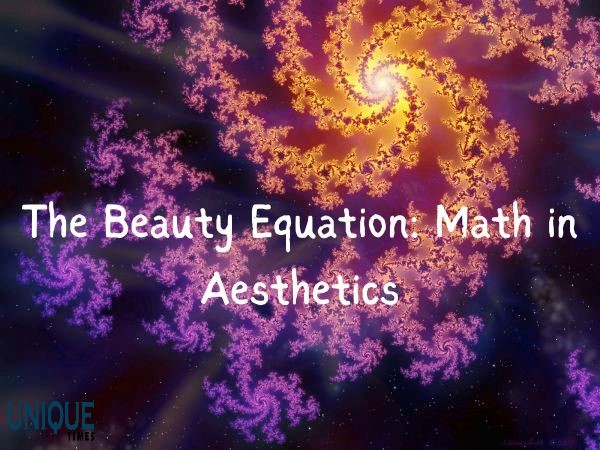The Mathematics of Beauty: Decoding Visual Appeal

Beauty is often said to be in the eye of the beholder, but could there be a mathematical formula that contributes to what we find visually appealing? From nature’s patterns to human-made designs, the aesthetics of the world around us may have a mathematical underpinning. In this exploration, we delve into the intriguing concept of the mathematics of beauty and what makes things visually pleasing.
1. The Golden Ratio: Nature’s Signature
The golden ratio, often represented by the number Phi (Φ ≈ 1.618), is a mathematical concept that appears in various natural phenomena. From the spirals of seashells to the arrangement of leaves on a stem, nature seems to follow this aesthetically pleasing proportion.
2. Symmetry: Balance and Harmony
Symmetry, both bilateral and radial, is a fundamental aspect of beauty. Faces that are considered attractive often exhibit a high degree of symmetry. In art and design, symmetrical balance is employed to create a sense of order and harmony.
3. Fractals: Infinite Complexity
Fractals are complex geometric patterns that repeat at different scales. Found in clouds, mountains, and even in the branching of trees, fractals offer a mesmerizing sense of order within complexity. This mathematical concept contributes to the allure of natural landscapes.
4. Fibonacci Sequence: Nature’s Number Series
The Fibonacci sequence (0, 1, 1, 2, 3, 5, 8, 13, 21, …) is another mathematical phenomenon observed in nature. The spiral arrangement of pinecones, sunflower seeds, and pineapples often follows Fibonacci numbers, adding to the visual intrigue of these natural formations.
5. Color Theory: Harmonious Blends
Color theory, rooted in mathematics, explores the relationships between colors. Concepts such as complementary colors, analogous colors, and color harmonies play a crucial role in creating visually appealing designs, whether in art, fashion, or interiors.
6. Rule of Thirds: Guiding the Eye
In photography and design, the rule of thirds is a guideline that divides an image into nine equal parts using two horizontal and two vertical lines. Points of interest placed along these lines or at their intersections often create visually pleasing compositions.
7. Gestalt Principles: Perceptual Organization
Gestalt psychology introduces principles like proximity, similarity, and closure, which contribute to how we perceive visual elements. These principles help explain why certain arrangements of shapes or objects appear more aesthetically pleasing than others.
8. Negative Space: The Power of Emptiness
The strategic use of negative space, the area around and between objects, can greatly enhance visual appeal. Balancing positive and negative space is an essential aspect of design, allowing the viewer’s eyes to rest and appreciate the composition.
Conclusion: Where Art Meets Mathematics
While the concept of beauty may be subjective, the interplay between mathematics and aesthetics is a captivating exploration. From the elegance of the golden ratio to the order within chaos in fractals, understanding the mathematics of beauty adds a layer of appreciation for the intricacies that surround us in the visual realm.
Picture Courtesy: Google/images are subject to copyright








